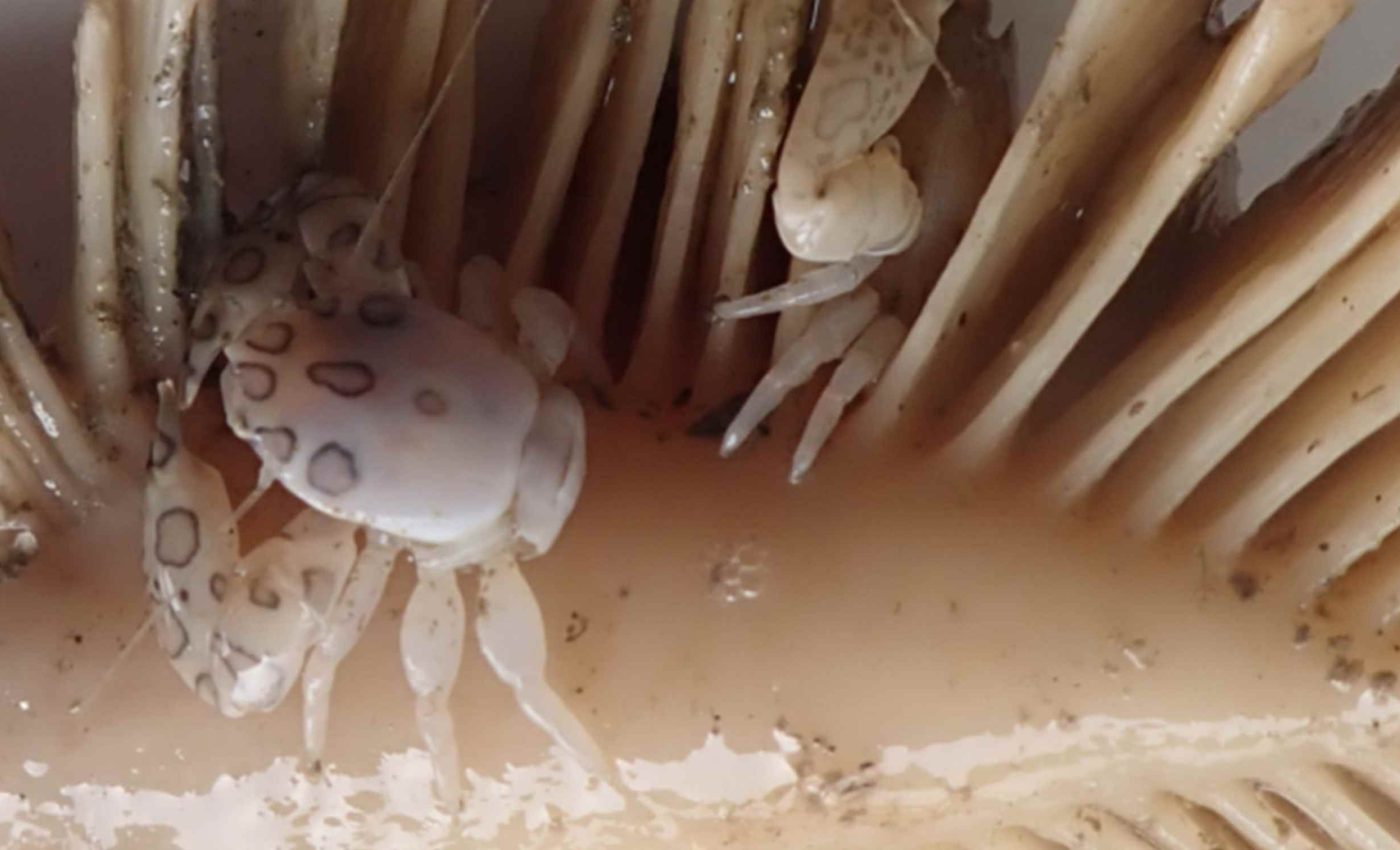
This tiny crab and a glowing shark fooled scientists for decades
Two newly described species from Western Australia’s deep waters are expanding the catalog of marine life – one a glowing lanternshark, and the other a tiny porcelain crab tucked inside soft corals.
Both were uncovered during recent biodiversity surveys, showing how much remains hidden along the region’s remote seafloor.
The lanternshark was identified from museum specimens collected off Western Australia. The porcelain crab emerged from surveys along the Ningaloo and Gascoyne coasts.
Together, they reveal how careful sampling and modern genetic tools continue to reveal the deep ocean’s overlooked diversity.
The discoveries were led by Commonwealth Scientific and Industrial Research Organization (CSIRO), Australia’s national science agency.
How lanternsharks use light
Lanternsharks are bioluminescent, producing light through a chemical reaction, and many use that light to blend with the dim glow from the surface. Evidence for this camouflage comes from experimental work on a related species.
The West Australian Lanternshark is small, roughly 16 inches long, with slender flank markings that helped scientists sort it from close relatives. Its description details subtle features and genetic data that separate it from lookalikes.
Researchers noted that lanternsharks are a fascinating group found during biodiversity surveys for Parks Australia in the Gascoyne Marine Park off Western Australia.
The new species was collected at depths reaching about 2,000 feet (610 meters) during a 2022 voyage aboard the research vessel Investigator.
A crab that hides in soft corals
The porcelain crab, Porcellanella brevidentata, lives in a long-term symbiotic relationship with sea pens. Its pale white-yellow body blends with its host. It is just over half an inch long, and it clings to the flexible leaves of soft corals.
A study documented that porcelain crabs are specialists at filter-feeding, trapping tiny food as water flows by. They sweep the water with bristled mouthparts.
Scientists explained that the new species of porcelain crab lives in close association with sea pens, a type of soft coral related to sea fans. It hides among their leaf-like structures for protection.
Confirming two new species
Finding new species today often means combining close-up anatomy with DNA. For the shark, the team compared fin markings, skin denticles, and vertebrae counts.
Researchers then measured differences in a mitochondrial gene to establish clear separation from two near neighbors.
For the crab, researchers used an integrative approach, mixing morphology and gene sequences to reveal four distinct lineages across Asia and Australia. One lineage matched the tiny white crab from Western Australia.
Taxonomists rely on body clues that stay stable across individuals. In lanternsharks, the arrangement of photophores, light-producing organs embedded in the skin, and the shape of dark flank patterns are especially useful.
In porcelain crabs, the shape of the three lobes on the snout and a small lobe on the claw segment help separate species.
Genetic tests give a second line of evidence. Researchers compared genetic distance to show the shark and crab differ clearly from lookalikes and are not just local variants.
Many species still go unseen
The deep ocean off Western Australia remains lightly sampled, so new surveys often turn up life that never made it into books. Many of these species are small or live on soft seafloor habitats, which standard gear can miss.
Targeted expeditions change that picture. A research vessel can tow fine-mesh nets near the bottom for short runs, gather specimens for museums, and record depth and habitat.
Those notes, combined with bioluminescence, help researchers place each specimen in the right ecological niche.
Science guiding safeguards
These finds also show why museum collections matter. A half-inch crab or a 16-inch shark can sit in jars for years until someone with the right expertise brings old samples and new data together.
That work, paired with DNA comparisons, still drives many species descriptions today – and it feeds directly into conservation.
Knowing what lives where is the first step toward smart management. If a species depends on sea pens a few hundred feet down, trawl rules and protected area plans can be tuned with that in mind.
If a lanternshark glows from belly and flank photophores, light-producing organs in the skin, that light can mark a depth band or behavior pattern managers use when planning surveys.
Researchers explained that lanternsharks are bioluminescent. They produce light through photophores on their bellies and sides, which gives them their common name.
They added that porcelain crabs feed by filtering plankton from the water with fine, hair-like mouthparts rather than grabbing prey with their claws.
The study is published in the Journal of Fish Biology.
Image credits: CSIRO-Cindy Bessey.
—–
Like what you read? Subscribe to our newsletter for engaging articles, exclusive content, and the latest updates.
Check us out on EarthSnap, a free app brought to you by Eric Ralls and Earth.com.
—–













